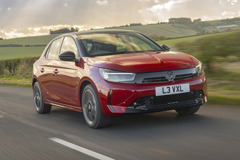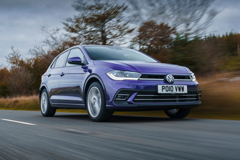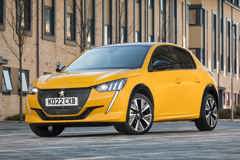Ford Fiesta (2017 – 2023) Review
Ford Fiesta (2017 – 2023) At A Glance
Insurance Groups are between 5–17
On average it achieves 78% of the official MPG figure
There’s a wide range of engines to choose from, three- and five-door body styles, a hot hatch model and even a crossover-style Active version. All of this is backed up with strong build quality and driving manners that leave all of the Ford’s rivals wondering which way it went on a country road thanks to its supreme ride and handling balance.
Many cars get larger as they are replaced with a new generation, but Ford has resisted this with its current eighth incarnation of the Fiesta. Instead, the present bearer of this illustrious name manages to feel more grown up and provide more interior space all while occupying much the same space on the road as the old car it replaced in 2017.
For this Ford, the more considered, mature approach is one that works ideally as you can still aspire to a Fiesta as your first car after passing the driving test or pick one as a replacement for a more expensive, larger car without feeling like you are giving up any of life’s rewards.
As with every Fiesta that has gone before, this one comes in a giddying array of trims, engines and specs to let buyers hone the car to their preferences. There are the hot hatch ST and off-roady Active versions for even more variation on the theme.
Sticking to the main Fiesta range, it comes in three- and five-door hatchback forms to lock horns with the Vauxhall Corsa and Volkswagen Polo, as well as the Hyundai i20, Renault Clio, SEAT Ibiza, Skoda Fabia and Toyota Yaris. That strength and depth of competition means the Fiesta can only ever be on top form if it wants to stay as one of the best-selling cars in its class.
To achieve that aim, the Fiesta offers a more refined drive than its predecessor to tackle the Polo head-on for comfort. It also serves up more grip and cornering prowess to keep the Renault Clio at bay, while more luxurious versions even have the ability to give the MINI and Audi A1 a run for their considerable money.
Doing all of this requires the Fiesta to be offered in a broad range of trims. You can choose from the entry-point Trend, which replaced the Zetec in mid-2019, Titanium, Titanium X, ST-Line and Vignale. With the ST-Line, you get a firmer suspension arrangement that shows just how brilliant the Fiesta can be when allowed to shine on a twisting country road.
The other models in the line-up have a softer set-up that confers greater comfort on the Ford supermini, though you certainly wouldn’t complain about their nimble handling or steering with bags of feel.
More importantly for the majority of customers for these cars is they are quieter at all speeds and come packed with plenty of kit, including the ‘floating’ infotainment screen and lane departure warning as standard.
As well as the spread of trims to choose from, you have three 1.0-litre Ecoboost turbo petrol engines to select from with 100-, 125- and 140PS, plus a 1.1-litre with 85PS as the lowest rung on the ladder. For diesel fans, Ford offers two 1.5-litre Duratorq motors in 85- and 120PS outputs.
All of these engines come with six-speed manual gearboxes, except the 1.1 that uses a five-speeder. If you want an auto, the 100PS 1.0 is the only Fiesta for you.
Such a wide offering is typical of the Ford Fiesta and why it remains the small hatch for just about everyone.
Looking for a second opinion? Why not read heycar's Ford Fiesta review.
Ford Fiesta (2017 – 2023) handling and engines
- Engines range from 1.0T EcoBoost 95 to 1.5 TDCi 120
- Readers report Real MPG to be between 28–71 mpg
Ford Fiesta (2017 – 2023): Handling and ride quality
On any type of road, the Fiesta flows along without any apparent effort, whereas much of the competition will be bouncing around and leaving their occupants feeling less than keen to continue.
Also, the Fiesta comes with controls for the pedals, gear change and steering that are better judged for weight and reaction than its rivals. They give the driver a sense of involvement that makes it fun, agile and cosseting. It’s also easy to park in packed city streets with a tight turning circle and light power-assisted steering.
Most Fiestas have the standard suspension that is ideal for the majority of situations, but keener drivers might find the ST-Line’s firmer settings better with a sportier edge that many will associate with Ford’s supermini.
With any Fiesta, motorway driving holds no concerns as the car is stable and unfazed by side winds. It makes the Ford a great all-round choice in this class and capable of working as your only car as well as a superb second car in a household.
Ford Fiesta (2017 – 2023): Engines
The Ford Fiesta’s entry-point 85PS 1.1-litre Ti-VCT petrol engine with five-speed manual transmission is restricted to Trend trim only. It gives a good account of itself but is a little slow on motorways.
The best engine is the three-cylinder 1.0-litre Ecoboost turbo petrol unit. It comes in 100-, 125- and 140PS outputs and we’d take the middle one for its blend of punch, economy, refinement and running costs. All pull strongly through the standard six-speed manual gearbox. There’s also an optional six-speed automatic transmissing.
Ford offers a pair of 1.5-litre turbodiesel engines with 85- or 120PS. We like the pace of the 120PS turbodiesel and its ability to cruise all day long on the motorway.
Ford Fiesta (2017 – 2023): Safety
Every Fiesta comes with six airbags as standard and Ford’s Intelligent Protection System ESP system.
There’s also Hill Start Assist, Isofix child seat mounts and a tyre pressure monitoring system complete the standard offering.
Ford offers a number of optional safety packs, including the NCAP Technology Pack that comes with Lane-Keeping Alert and assistance, speed limiter, automatic headlights, and a headrest for the rear middle passenger. Another pack called the Driver Assistance Features brings rain-sensing wipers, Traffic Sign Recognition and Driver Alert with a 4.2-inch colour display in the main instrument pod.
You can order rear parking sensors separately or as part of the City Pack that also has electrically folding door mirrors with integrated puddle lights.
| Engine | MPG | 0-62 | CO2 |
|---|---|---|---|
| 1.0T EcoBoost 100 | 58–60 mpg | 10.5–10.8 s | 97–132 g/km |
| 1.0T EcoBoost 100 Automatic | 50–50 mpg | 12.2–12.4 s | 118–130 g/km |
| 1.0T EcoBoost 100 Powershift | 50 mpg | 12.2 s | 118 g/km |
| 1.0T EcoBoost 125 | 58–60 mpg | 8.9–10.0 s | 96–122 g/km |
| 1.0T EcoBoost 125 Automatic | - | 9.4–9.6 s | 119–133 g/km |
| 1.0T EcoBoost 140 | 55–58 mpg | 9.0 s | 102–109 g/km |
| 1.0T EcoBoost 155 | - | 6.5–8.9 s | 114–121 g/km |
| 1.0T EcoBoost 95 | - | 10.6–13.8 s | 94–103 g/km |
| 1.1 Ti-VCT | 55 mpg | 14.0–14.5 s | 101–114 g/km |
| 1.1 Ti-VCT 70 | 55 mpg | 14.9 s | 101 g/km |
| 1.1 Ti-VCT 75 | - | 14.5–14.7 s | 102–121 g/km |
| 1.1 Ti-VCT 85 | 55–64 mpg | 14.0 s | 101–114 g/km |
| 1.5 TDCi 120 | 64–67 mpg | 9.0–9.5 s | 89–96 g/km |
| 1.5 TDCi 85 | 74 mpg | 12.4–12.5 s | 82–98 g/km |
Real MPG average for the Ford Fiesta (2017 – 2023)

Real MPG was created following thousands of readers telling us that their cars could not match the official figures.
Real MPG gives real world data from drivers like you to show how much fuel a vehicle really uses.
Average performance
78%
Real MPG
28–71 mpg
MPGs submitted
646
Ford Fiesta (2017 – 2023) interior
- Boot space is 292–1093 litres
- Euro NCAP rating of five stars
| Dimensions | |
|---|---|
| Length | 4040–4140 mm |
| Width | 1941 mm |
| Height | 1466–1498 mm |
| Wheelbase | 2494 mm |
Ford Fiesta (2017 – 2023): Practicality
The main dials in the Ford Fiesta are easy to see and distinguish on the move and the steering wheel can be altered for angle and depth. Mix this with a comfortable driver’s seat that has height adjustment and you can quickly find the ideal seating position. However, the controls for moving the seat are tightly packed between seat base and door, so it’s best to adjust them chair before closing the door.
For adults, it’s strictly for two and they will find head and leg space at a premium if they are of average or above height.
Turning our attention to load carrying, the Fiesta’s boot has up to 311-litres of space in normal use, which puts in the middle ground of this class. It’s deep and uninterrupted by intrusions from the wheelarches, but there is a high load sill to drag heavier bags over.
Ford Fiesta (2017 – 2023): Quality and finish
This is an area where Ford has worked hard to shed the previous Fiesta’s somewhat utilitarian approach to fabrics and materials. It’s a partial success as the upper section of the dash’s softly padded plastic looks and feels good, while the main sweep of the dash and centre console are just as pleasing.
Glance further down and deeper into the cabin and you begin to notice far more basic looking finished and textures. They are hard-wearing and robust, and Ford puts the Fiesta together as well as any of its rivals, but it just misses that last degree of wow factor you get in a MINI or Volkswagen Polo.
Ford Fiesta (2017 – 2023): Infotainment
Every Ford Fiesta now comes with an 8-inch infotainment screen as Ford has binned off the basic Style and Zetec models. With the Trend and ST-Line models, you get the SYNC system that comes with a touchscreen and steering wheel buttons. It is easily hooked up to Apple CarPlay or Android Auto for music and apps.
Move into most other Fiesta trims and you get an upgrade to the SYNC 3 infotainment system that includes navigation, voice control and FordPass Connect internet access. Again, this still requires your smartphone to work at its best, but it’s still simple to work.
Ford Fiesta (2017 – 2023) value for money
Ford Fiesta (2017 – 2023): Prices
Shop around and you should have no trouble find Ford dealers happy to discount a pre-registered Fiesta by £1100 with no haggling. A bit of negotiating should see that figure increase to £1500 or even more.
If you’re prepared to travel a little further to get the best bargain, you can find pre-registered Fiesta models, such as a 1.0 Titanium 125PS five-door with only 120 miles on the clock, for £4000 under the official list price. These deals tend to be for the most popular versions of the Fiesta and from large dealer groups, but it goes to show you can make a 25% saving on the new price with a bit of pre-purchase research.
There are some great deals on nearly new Fiestas, too. Expect to pay £11,000 for a six-month old Fiesta Trend with the 1.1-litre petrol motor, while a 1.0 Ecoboost in Titanium spec of the same age will be £15,000.
Early versions of this eighth generation of Fiesta can be had from £7500, though they will have higher than average mileages. That shouldn’t put you off as the car has proven to be reliable and durable, but for those that prefer a more average mileage for the age of the car, a three-year old Fiesta can be yours from £8000 for a Zetec model with less than 30,000 miles to its name.
Ford Fiesta (2017 – 2023): Running Costs
The 1.5 TDCi offers an official consumption of 55.4mpg based on WLTP testing. The Real MPG figures for this model show it can achieve 63.2mpg in mixed driving.
Most Fiesta drivers will opt for the 1.0-litre Ecoboost engine and the best choice here is the 100PS version with the six-speed manual gearbox. Its official figure of 46.3mpg compares to a Real MPG 44.0mpg.
Ford Fiesta insurance starts with the 1.1-litre Ti-VCT model that sits in group 5 in Trend specification. Our favourite 1.0 Ecoboost-powered models sit in group 10 for the 100PS version of this engine and that hikes up to group 12, or group 13 for the Titanium X and Vignale trims, with the 125PS motor.
The 140PS Ecoboost resides in groups 14 or 15 depending on spec, making this Fiesta better suited to those with several years of no claims bonus to their credit.
For road tax, the lower power 85PS 1.5-litre turbodiesel costs £135 for the first year and £150 in subsequent years. You will pay an extra £20 for the first year’s tax with the Ecoboost petrol engines with manual gearbox, or £175 if you opt for the automatic transmission.
The 1.1-litre Ti-VCT’s 114g/km carbon dioxide emissions push it into the same £175 per year bracket. This makes it a little pricier to run than the Ecoboost models.
Satisfaction Index
 What is your car like to live with?
What is your car like to live with?
We need your help with our latest Satisfaction Index, so that we can help others make a smarter car buying decision. What's it like to live with your car? Love it? Loath it? We want to know. Let us know about your car - it will only take a few minutes and you could be helping thousands of others.
Help us with the Honest John Satisfaction Index nowFord Fiesta (2017 – 2023) models and specs
Ford replaced the Style and Zetec trims with the Trend that has 16-inch alloy wheels, rear privacy glass, front foglamps with cornering light, and Ford’s Quickclear heated windscreen.
Inside, you enjoy air conditioning, electric windows all round, and the SYNC infotainment system with 8-inch screen. Also included is a Lane-keeping System. The Titanium ups the ante with electrically folding door mirrors and automatic lights and wipers.
It comes with keyless start, too, cruise control, Traffic Sign Recognition and Ford’s SYNC 3 infotainment with navigation. Go for the Titanium X and you gain keyless entry, half-leather upholstery and a Bang and Olufsen Premium stereo with 10 speakers.
For greater luxury, the Vignale has 17-inch alloys, unique grille, bumpers and chrome. On the inside, you have full leather seats, which are heated alongside the steering wheel, rear parking camera, and an opening panoramic sunroof.
The ST-Line has sports-tuned suspension, more side-hugging seats, and flat-bottomed steering wheel. To this, the ST-Line X adds LED rear lights, automatic lights, wipers and high beam assist, cruise control, half-leather seats, and the SYNC 3 infotainment.
| Dimensions | |
|---|---|
| Length | 4040–4140 mm |
| Width | 1941 mm |
| Height | 1466–1498 mm |
| Wheelbase | 2494 mm |
| Miscellaneous | |
|---|---|
| Kerb Weight | 1113–1630 kg |
| Boot Space | 292–1093 L |
| Warranty | 3 years / 60000 miles |
| Servicing | 10000–18000 miles |
| Costs | |
|---|---|
| List Price | £17,985–£26,195 |
| Insurance Groups | 5–17 |
| Road Tax Bands | A–E |
| Official MPG | 49.6–74.3 mpg |
| Euro NCAP Safety Ratings | |
|---|---|
| Adult | - |
| Child | - |
| Pedestrian | - |
| Overall | 5 |
Currently on sale
| Hatchback | |||
|---|---|---|---|
| Version | List Price | MPG | 0-62 |
| ST-Line T EcoBoost 100 Start/Stop 5dr | £20,935 | - | 10.8 s |
| ST-Line Ti-VCT EcoBoost 125 MHEV DCT Auto Start/Stop 5dr | £23,780 | - | 9.6 s |
| ST-Line Ti-VCT EcoBoost 125 MHEV Start/Stop 5dr | £22,280 | - | 9.4 s |
| ST-Line X T EcoBoost 100 Start/Stop 5dr | - | - | 10.8 s |
| ST-Line X Ti-VCT EcoBoost 125 MHEV DCT Auto Start/Stop 5dr | £26,195 | - | 9.6 s |
| ST-Line X Ti-VCT EcoBoost 125 MHEV Start/Stop 5dr | - | - | 9.4 s |
| Titanium T EcoBoost 100 Start/Stop 5dr | £20,935 | - | 10.8 s |
| Titanium Ti-VCT EcoBoost 125 MHEV DCT Auto Start/Stop 5dr | £22,430 | - | 9.6 s |
| Titanium Ti-VCT EcoBoost 125 MHEV Start/Stop 5dr | £20,930 | - | 9.4 s |
| Titanium X T EcoBoost 100 Start/Stop 5dr | - | - | 10.8 s |
| Titanium X Ti-VCT EcoBoost 125 MHEV DCT Auto Start/Stop 5dr | £23,105 | - | 9.6 s |
| Titanium X Ti-VCT EcoBoost 125 MHEV Start/Stop 5dr | - | - | 9.4 s |
| Trend T EcoBoost 100 Start/Stop 5dr | £17,985 | - | 10.8 s |
| Trend Ti-VCT 75 Start/Stop 5dr | £18,410 | - | 14.7 s |
On sale until December 2022
On sale until January 2022
On sale until June 2021
| Hatchback | |||
|---|---|---|---|
| Version | List Price | MPG | 0-62 |
| 1.0T 95ps St-Line Edition EcoBoost 3dr | £19,840 | - | 13.8 s |
| 1.0T 95ps St-Line Edition EcoBoost 5dr | £19,490 | - | 10.6 s |
| 1.0T 95ps Titanium EcoBoost 5dr | £18,390 | - | 10.6 s |
| 1.0T 95ps Trend EcoBoost 3dr | £17,390 | - | 13.8 s |
| 1.0T 95ps Trend EcoBoost 5dr | £17,040 | - | 10.6 s |
| 1.5 TDCi 85PS St-Line Edition 3dr | £20,780 | - | 12.4 s |
| 1.5 TDCi 85PS St-Line Edition 5dr | £20,680 | - | 12.4 s |
| 1.5 TDCi 85PS St-Line X Edition 3dr | £22,106 | - | 12.4 s |
| 1.5 TDCi 85PS St-Line X Edition 5dr | £21,930 | - | 12.4 s |
| 1.5 TDCi 85ps Titanium 5dr | - | - | - |
| 1.5 TDCi 85ps Titanium X 5dr | - | - | - |
| 1.5 TDCi 85PS Trend 3dr | £18,280 | - | 12.4 s |
| 1.5 TDCi 85PS Trend 5dr | £18,230 | - | 12.4 s |
| 1.5 TDCi 85PS Vignale Edition 5dr | £22,830 | - | 12.4 s |
| Edition Ti-VCT EcoBoost 125 DCT Auto Start/Stop 5dr | - | - | - |
| ST-Line X Edition Ti-VCT EcoBoost 125 DCT Auto Start/Stop 3dr | - | - | - |
| ST-Line X Edition Ti-VCT EcoBoost 125 DCT Auto Start/Stop 5dr | - | - | - |
| Titanium X Ti-VCT EcoBoost 125 DCT Auto Start/Stop 5dr | - | - | - |
On sale until October 2020
On sale until April 2020
On sale until October 2019
Model History
- November 2016: Ford announced Fiesta
- March 2017: UK prices announced for 2017 Ford Fiesta
- July 2019: Ford Fiesta Trend replaces Zetec trim level
- June 2020: Ford Fiesta given mild-hybrid tech
- February 2021: Ford Fiesta 1.0 EcoBoost Hybrid now offered with automatic gearbox
- September 2021: Ford Fiesta updated for 2022
November 2016
Ford announced Fiesta
The 2017 Fiesta is also offered as a luxurious Ford Fiesta Vignale model – part of the Ford Vignale upscale product and ownership experience. The Fiesta Vignale offers unique 18-inch alloys wheel designs, exclusive exterior detailing and colours, and hexagonal-quilted, tuxedo-stitched leather seats.
The Fiesta Active is the first Fiesta crossover model, combining rugged SUV-inspired styling that includes raised ride-height, roof bars and additional exterior bodystyling; hatchback practicality; and true Fiesta driving dynamics. The Active series will join the Fiesta line up later on in the launch period.
The Fiesta ST-Line features sporty exterior styling including unique alloy wheel, grille, front and rear bumper and side-skirt designs. The interior features sports seats, alloy pedals and a flat-bottomed steering wheel, while the driving experience is enhanced with sports suspension.
2017 Fiesta is the first Ford to deliver an enhanced version of Pre-Collision Assist with Pedestrian Detection that can detect people who are in or near the road ahead, or who may cross the vehicle’s path, using light from the Fiesta’s headlights at night.
The system is designed to reduce the severity of some frontal collisions involving vehicles and pedestrians, or help drivers avoid some impacts altogether. A wider camera angle helps to better track pedestrian movements.
Also offered for the first time on Fiesta is Ford’s Active Park Assist with Perpendicular Parking, which helps drivers find suitable spaces and park hands‑free nose-to-tail and side-by-side with other cars. Further enhanced for Fiesta, the technology for the first time can now apply the brakes if drivers do not respond to system guidance and proximity warnings while performing forward and reverse manoeuvres, and a collision with a parked car or obstacle to the front or rear is imminent.
The Fiesta’s floating, tablet-inspired 8-inch colour touchscreen can be operated with pinch and swipe gestures. Also offered with SYNC 3 is a floating 6.5-inch colour touchscreen, and a 4.2-inch colour screen is combined with the MyFord Dock that enables users to store, mount and charge mobile devices such as phones and navigation systems. All Fiesta screens offer class-leading resolution and are up to twice as bright as competitors, making it even easier for drivers to read and navigate on-screen information and functions.
A stiffer body structure, reduced powertrain noise vibration and harshness, enhanced powertrain isolation, and an acoustic windshield contribute to a more comfortable and premium driver and passenger experience. Best-in-class levels of quietness include an interior road noise level of 29.3 sone – a metric for loudness – at 62mph, a seven per cent improvement over the outgoing Fiesta.
The number of buttons on the centre console is reduced by almost half, with many connectivity and entertainment controls relocated to the 8-inch touchscreen. The most natural and ergonomic positions for controls and screens were confirmed using eye-tracking software, and both the instrument cluster display and central screen are positioned to clearly deliver information at a glance.
Ford’s 1.0-litre EcoBoost petrol engine is offered with 100PS, 125PS and 140PS, and a new six-speed manual gearbox with a reduced friction architecture that helps deliver from 97g/km CO 2 emissions, or an optional six-speed automatic gearbox for the 100PS variant with steering wheel-mounted paddle shifters.
The turbocharged three-cylinder 1.0-litre EcoBoost engine features advanced technologies including high-pressure direct fuel injection, Twin-independent Variable Cam Timing, and an innovative offset crankshaft design for unparalleled three-cylinder refinement.
Ford’s 120PS 1.5-litre TDCi engine is the first high-power diesel powertrain ever offered for Fiesta – delivering a versatile combination of power, torque and fuel efficiency for a fun to drive experience, a six-speed manual gearbox, and anticipated CO 2 emissions of 89g/km. The basic 1.5-litre TDCi engine is offered with 85PS – 10PS more than the most fuel-efficient outgoing Fiesta – and delivering from an anticipated 82g/km CO 2 supported by Ford’s new six-speed manual gearbox.
The 1.5-litre TDCi engine employs optimised combustion chamber design, turbocharging – including variable geometry technology for the high power 120PS version – and sophisticated fuel injection that enhances refinement. Smart Regenerative Charging enhances fuel efficiency by selectively engaging the alternator and charging the battery when the vehicle is coasting and braking.
Ford’s 1.1-litre petrol engine shares a three-cylinder architecture with the 1.0-litre EcoBoost, and is offered with a new five-speed manual gearbox in 70PS and 85PS versions, replacing the outgoing naturally aspirated 1.25-litre petrol engine and delivering more power and anticipated reduced CO 2 emissions from 101g/km.
Fuel efficiency is further enhanced with Auto‑Start‑Stop technology offered for all engines, and Active Grille Shutter for 1.0-litre EcoBoost and 85 PS 1.5-litre TDCi engines. A new Eco button for manual transmissions adjusts engine and throttle settings to help drivers save even more fuel when desired. Underbody aero shielding further reduces aero drag.
March 2017
UK prices announced for 2017 Ford Fiesta
From £12,715 for the Style model, on sale from Spring 2017.
The range continues through Zetec and Titanium to high-tech B&O PLAY series, luxury Vignale and sporty ST-Line models available from Summer 2017.
The most popular Fiesta variant is the Zetec from £14,215, with 15in alloy wheels, Quickclear heated windscreen and Ford’s SYNC 3 DAB radio with a 6.5-inch touchscreen with Emergency Assistance, Apple CarPlay and Android Auto as standard.
Ford also launches a unique B&O PLAY series range available on Zetec and Titanium models offered in two striking exterior and interior colour themes – Bohai Bay Mint and Chrome Copper. The new B&O PLAY systems – exclusive to Ford’s global vehicle line-up – offer an elevated audio experience with ten speakers including a boot-mounted subwoofer and a central mid-range speaker on top of the instrument panel, incorporating the B&O PLAY aluminum logo and a unique radiating hole pattern. The stylish series also get the upgraded 8-inch floating tablet-inspired touchscreen and Navigation as standard and are available from £15,165.
The 2017 Fiesta is also offered as an upscale Vignale model – priced from £19,345. The Fiesta Vignale features 17-inch alloy wheels, unique exterior body styling and front grille and distinctive interior in Black Ruby leather, heated seats and steering wheel, panoramic roof and a rearview camera as standard.
July 2019
Ford Fiesta Trend replaces Zetec trim level
Expected to account for one in every four of the 100,000 Fiestas sold in the UK annually, the new Fiesta Trend is available in three- and five-door bodystyles.
Standard exterior features include 16-inch silver and black machined alloy wheels, privacy glass and six metallic body colours plus mesh design front grille with chrome surround and halogen projector headlamps with daytime running lights.
As well as SYNC infotainment and connectivity inside, lane keeping aid, speed limiter, auto head lamps and MyKey also come as standard. MyKey enables top speed, maximum audio volume and other settings to be limited for when the car is driven using the second “MyKey”.
The Fiesta Trend is powered by the 1.1-litre petrol 85PS engine. It replaces Zetec as the entry-level series in the Fiesta range at £15,995 with deliveries starting next month. With a £5000 deposit and 9000 a year annual mileage, monthly payments on Ford Options start from £120 over four years.
June 2020
Ford Fiesta given mild-hybrid tech
Fiesta drivers can now benefit from Ford’s mild-hybrid technology, first introduced in the new Ford Puma crossover.
Available in 125PS and 155PS power outputs, Fiesta EcoBoost Hybrid models feature a belt-driven integrated starter/generator (BISG) in place of the standard alternator, enabling recovery and storage of energy usually lost during braking and coasting to charge a 48-volt lithium-ion air-cooled battery pack.
The BISG also acts as a motor, integrating with the engine and using the stored energy to provide torque assistance during normal driving and acceleration, as well as running the vehicle’s electrical ancillaries.
Both Fiesta EcoBoost Hybrid and traditional petrol powertrains – available with 95PS and 125PS power outputs – now utilise the latest 1.0-litre EcoBoost engine featuring cylinder deactivation.
The technology enhances fuel efficiency by automatically switching off one of the cylinders when full capacity is not needed, such as when coasting or cruising with light demand on the engine and can disengage or re-engage one cylinder in 14 milliseconds with no compromise in performance or refinement.
Fiesta’s 125PS 1.0-litre EcoBoost engine can now also be specified with a new seven-speed dual-clutch automatic transmission. Ford says this offers seamless gear changes for optimised refinement and fuel efficiency improvements of up to 15 per cent compared to the out-going 100PS 1.0‑litre EcoBoost six-speed automatic configuration (NEDC) – despite offering 25 per cent more power. An 85PS 1.5-litre TDCi diesel engine is also offered for high-mileage drivers.
February 2021
Ford Fiesta 1.0 EcoBoost Hybrid now offered with automatic gearbox
48-volt mild-hybrid engine can now be paired with a seven-speed dual-clutch gearbox. UK prices to be announced.
September 2021
Ford Fiesta updated for 2022
Trend, Titanium, ST-Line and Active models each benefit from unique styling elements alongside an expanded range of exterior colours, wheel designs and interior finishes. The Fiesta range is also expanded with new Vignale packs that amplify the Titanium, ST‑Line and Active personalities with luxury specifications.
Latest generation technologies help ensure new Fiesta is better equipped than ever for intelligent, connected driving experiences. LED headlights are for the first time introduced to all Fiesta variants, with advanced Matrix LED technology available that offers Glare-Free High Beam functionality and can also adapt headlight beam patterns for better visibility in challenging conditions.
The new Fiesta, available to order now from £16,620 on the road, for delivery in early 2022, also introduces a 12.3-inch digital instrument display that helps drivers stay informed for relaxing journeys. Local Hazard Information and Wrong-Way Alert make their Fiesta debuts among a suite of sophisticated driver assistance technologies.
Electrified powertrains will help new Fiesta drivers save fuel and reduce emissions while maximising driving fun. Ford EcoBoost Hybrid 48-volt mild hybrid technology helps optimise fuel efficiency while simultaneously enhancing Fiesta’s acclaimed driving dynamics with responsive acceleration. The technology works hand-in-hand with Ford’s Powershift seven-speed automatic transmission option for fast, seamless gearchanges and the most comfortable and confidence-inspiring Fiesta driving experience.
What to watch out for
Report of reversing camera working only intermittently on a November 2017 Ford Fiesta 1.0 EcoBoost, despite going back to Ford dealer 3 times for a fix which included changing the camera without success and. as no software patch seems to be available, is now seeking a replacement 'ECU'. Ford is unable to indicate when a part may be available.
21-02-2019:Report of failure of the manual transmission of a 2018 Ford Fiesta 1.1 Zetec bought at 9 months old. On attempting to drive it home the new owner found he could not change gear. The car was then recovered by the AA, returned to the showroom and owner demanded a return of the vehicle and an immediate refund, which he eventually got in full. The Ford dealer subsequently informed him that this was, apparently, an occasional problem on Fiestas.
02-04-2019:Report of 2017 new model Fiesta bought new in November 2017 running down its battery after having been left unused for 2-3 weeks.
04-06-2019:Complaint of 2017/67 Ford Fiesta refusing to unlock with the fob or the spare. Called AA who told her how to open the car manually with the hidden key, but that it's a known Fiesta fault where the keys forget the car and require a "software update". Both keys started working again. Supplying dealer said all they could do was replace both batteries and refused to acknowledge the fact that both keys miraculously started working again. Ford UK has denied any knowledge of an issue or a software update.
25-06-2019:Report of stop-start function of new shape 2017 Fiesta 1.0litre Auto only cutting in on a couple of ocassions since purchase used 12 months previously. Back to the dealer twice but each time they say cannot find anything wrong with diagnostics. Owner says battery cannot be being charged sufficiently or is faulty otherwise the function would work. Does reasonable mileages and have had the battery go flat when car was unused for 4 days.
18-07-2019:Strange issue reported with June 2018 Ford Fiesta 1.1 Titanium, bought used at 5199 miles in May 2019. Yellow spanner came up on the display (indicating a malfunction) and the engine lost power for about 5-6seconds, then regained full power, carried on for about a quarter of a mile and lost power again.
06-08-2019:Report of battery regularly going flat in a 2017 Ford Fiesta.
22-09-2019:Report of audible warning and light coming on in brand new Ford Fiesta 1.0 Ecoboost, then going off before driver can work out what it is for. It will be the petrol particulate filter warning which then self-cleans so the warning goes off.
09-11-2019:Complaint about Sync3 not working in a 2018 Ford Fiesta 1.0 Ecoboost ST-Line automatic. The Sync 3 system includes the Sat Nav, yet, even though it has WiFi it doesn’t update. Owner has tried downloading satnav updates to a USB to update but it doesn’t work. Sat nav goes blank, all roads disappear and he can only see the red arrow. This happens just about every day. The car has been back to the dealers and they have applied all available updates but confirm it’s not fixed until Ford provides a permanent fix. Owner having to try to use Apple Carplay and Google Maps.
23-07-2020:Report of 2020 Ford Fiesta breaking down on the drive home from the dealership. Engine warning light appeared on the dashboard with the message "low oil pressure". Dealership recovered the car and stated it needed parts to be ordered from Germany and the owner would have the car back in a week. Owner is rejecting the car under the consumer rights act 2015.
06-12-2021:Problems reported with 2021 1.0 mHEV Fiesta. After three weeks of ownership there were problems with the passenger door touch sensitive unlocking. Owner took the car back to the dealer who said it was because the 12v battery was low (40 per cent). They suggested that because the owner only does around 100 miles a week and the hybrid system is only really charging the hybrid battery, so the standard one is likely to regularly run down.
15-12-2021:Heater failure on 2017 Ford Fiesta 1.0 EcoBoost The heater fan ceased to work on two occasions in any position except four, the highest. Each time the repair was done by fitting a new resistor. The latest repair failed again. Ford dealer now thinks that to effect a proper repair a new heater motor will have to be fitted. They say that five and a half hours labour will be required as access has to be carried out through the dashboard. The new motor will cost approximately £400 and the total bill will come to just over £1000. Unclear if the dealer or Ford will contribute towards the cost of the repair.
05-07-2023:Report of a one year old Ford Fiesta Ecoboost MHEV where the 12v battery keeps running down so the air con will not work.

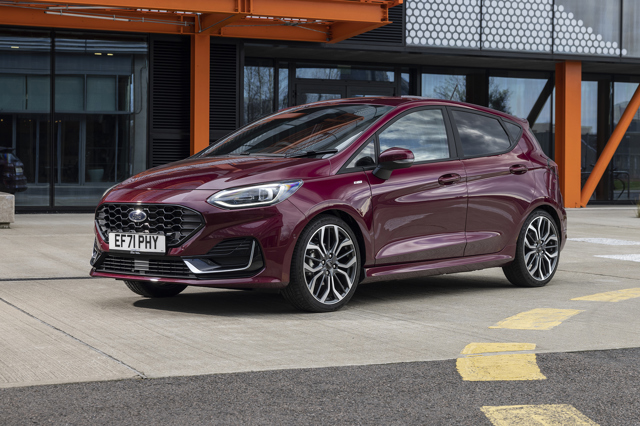
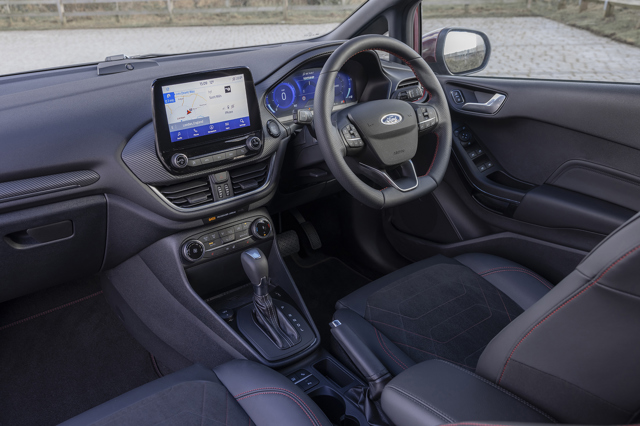
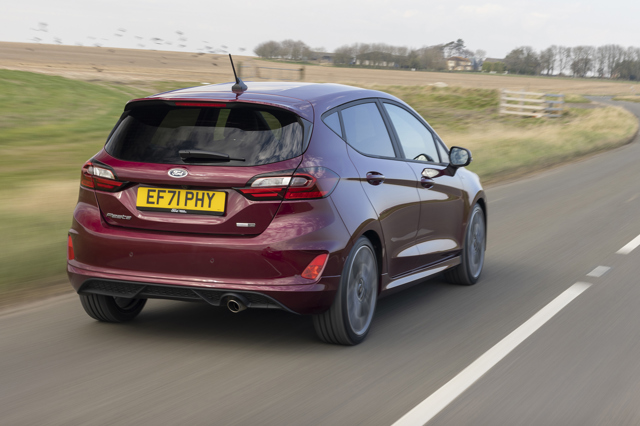
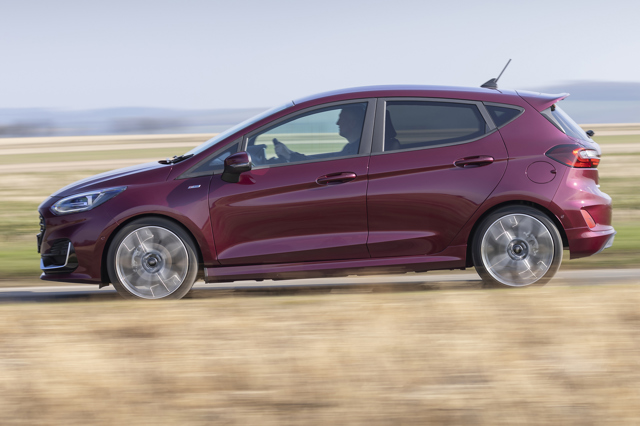
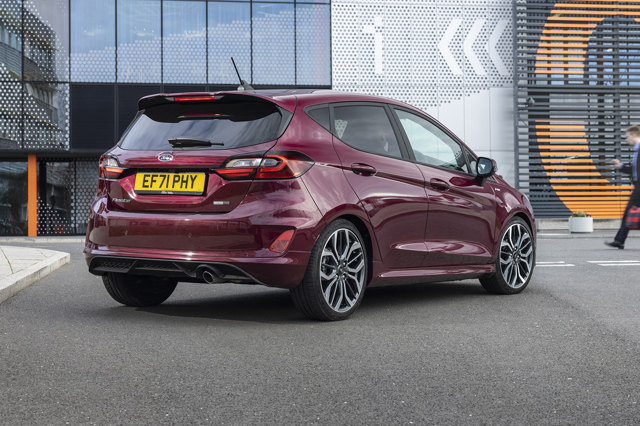
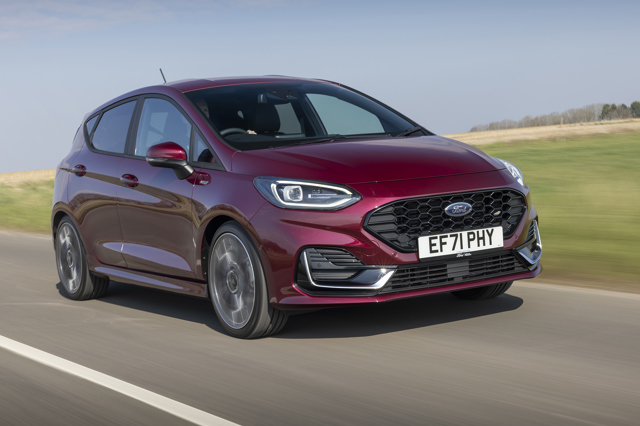
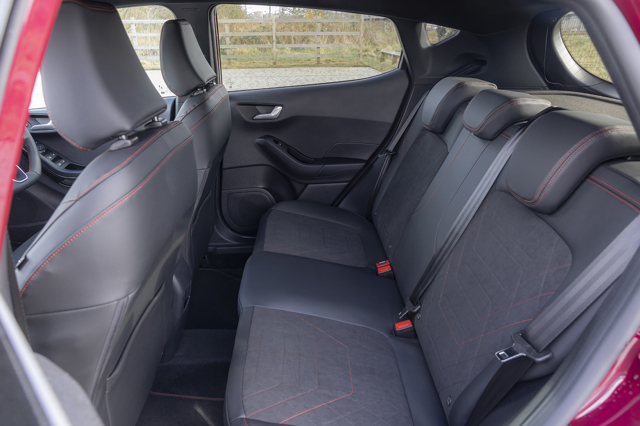


 Most versions good to drive especially ST-Line but significantly more refined, comfortable and practical, comes with active safety technology as standard.
Most versions good to drive especially ST-Line but significantly more refined, comfortable and practical, comes with active safety technology as standard.
 Several Fiesta models including Vignale now list at more than £20,000.
Several Fiesta models including Vignale now list at more than £20,000.
